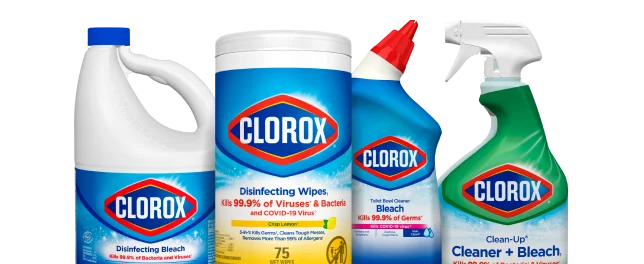How Much Bleach Is Too Much Bleach on Clothes and Laundry?

What happens if you use too much bleach on clothes? Make sure you don&;t use too much bleach in your washing machine, on white clothes, and in your laundry.
Question
I would like to ask if you can use too much bleach in a wash load? Let me explain:
My husband is a chef. His chef coats are 100% cotton. He will soak them over night in up to 3 cups of bleach, hot water, dish detergent and laundry soap (liquid right now). His chef coats have been turning yellow. Admittedly, we have extremely hard water. Please let me know if there is a way to get the yellow out and what is the maximum amount of bleach he should be using.
Answer
There are three possible reasons for the yellowing of the chef’s coats: a stronger than recommended bleach and water solution, a longer than recommended soak time, and metals in your water supply.
To presoak with bleach and water, we recommend a ratio of ¼ cup Clorox® Disinfecting Bleach per gallon of water. For “up to 3 cups” of bleach, you would add that to 12 gallons of water to make the soaking solution. If you are doing this in a standard deep-fill top loading washer on the “small” load setting, you probably are adding enough water; newer top loading HE washers may add less water for a soak cycle.
The recommended soak time is 5 minutes, after which you should drain the soaking solution and either rinse the item thoroughly or machine wash with the hottest water recommended using laundry detergent and ⅓ cup Clorox® Disinfecting Bleach. Soaking the chef’s jackets overnight is substantially longer than what we recommend for regular bleach, and is very likely contributing to the yellowing.
Hard water often includes higher than normal levels of metals like iron and manganese that can cause yellowing of fabrics on their own. Clorox® Disinfecting Bleach includes a polymer in the formula that can tie up metals in wash water to prevent fabric from yellowing fabric. However, if the concentration of metals in your wash water is exceptionally high, you may still see yellowing when the metals react with the bleach active.
Yellowing caused by metals in the wash water, using a too-strong bleach solution and/or soaking too long is usually difficult to reverse. You could try soaking with Clorox 2® for Colors Stain Remover and Laundry Additive to brighten the chef jackets. If you aren’t familiar with our color safe bleach, learn more about it here.
In the future, if you install a water treatment system to remove metals from the water, use the correct bleach to water ratio, and limit soaking time to 5 minutes, you should get better results. This article also has lots of great tips for getting stains out of clothes you may find useful. And here’s an article about using bleach in your laundry you may want to review, as well.

